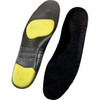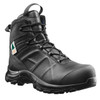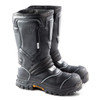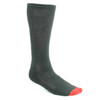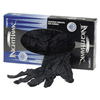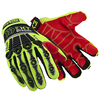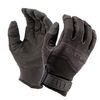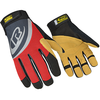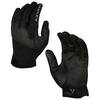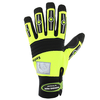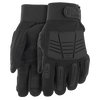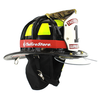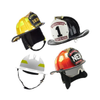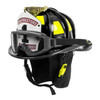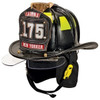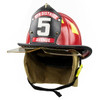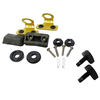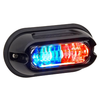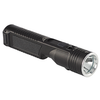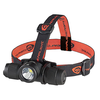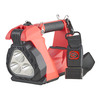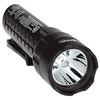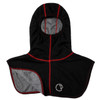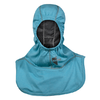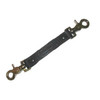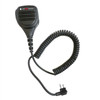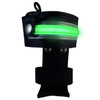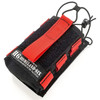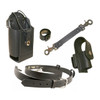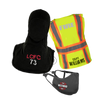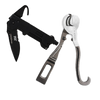WHY YOUR DEPARTMENT NEEDS THERMAL IMAGING CAMERAS AND SIX KEY CONSIDERATIONS FOR BUYING THEM
Posted by James Careless and Mazzy Beasley on Mar 19th 2024
The ability of thermal imaging cameras (TICs) to detect various levels of infrared radiation (heat) and then display them as visible light on handheld color screens makes these tools indispensable for police and fire departments.
For police departments, handheld TICs (and now aerial TICs in drones) allow them to detect people and other heat sources in darkness and other visually obscured conditions. As a result, police can use TICs to search for missing persons, locate and identify victims and perpetrators during hostage situations and shootouts. It also allows law enforcement to "see" people illegally crossing borders into protected wildlife zones and other secured areas.
Meanwhile, TICs can assist firefighters in a myriad of ways. For instance, being able to see the intensity and location of heat sources from a safe distance can help fire crews identify dangerous hot spots and safe routes of entry/exit in burning buildings. TICs are also useful for finding victims. As well as surveying fire risks in car crashes or finding an occupant thrown from a vehicle. Factor in HAZMAT chemical detection due to temperature differences and USAR applications such as tracking down missing people during searches, and you'll find TICs are a must-have for every fire department.
Of course, all thermal imaging cameras are not equal. Here are six questions you need to answer first, to get the right TICs for your department.
#1 WHAT WILL THE TICS BE USED FOR?
To find the right thermal imaging cameras for your department, begin by determining how it will be used by your officers and for what functions. If the TICs will be deployed in wide-area outdoor searches, rugged all-weather handheld TICs with long battery life are your best bet. But if the TICs will be looking inside buildings to identify people and fire hot spots, high resolution imagery that provides a lot of information to the viewers are a priority.
#2 HOW MUCH IMAGE RESOLUTION DO I NEED?
Ideally, the more image resolution that a thermal imaging camera can deliver when it comes to defining different temperature levels as different colors, and showing shapes being detected as intelligible images, the better. However, a department doesn’t have to have the highest possible resolution. Some lower-cost cameras can still provide enough resolution to do the job properly.
# 3 HOW BIG IS THE TIC’S DISPLAY SCREEN, AND HOW VIEWABLE IN ALL LIGHT CONDITIONS?
The specific size of a thermal imaging camera’s display isn’t as important as it being bright enough to portray imagery clearly in all light conditions. Paying extra for a larger display makes sense if a law enforcement officer needs a lot of visual details, i.e. when looking inside buildings to find hostages and shooters. However, the camera size needs greatly depend on the intended use for fire departments. The larger cameras work well for fire officers who are looking at the bigger picture while smaller cameras act as a situational awareness tool and do not necessarily need the size. the larger size may not be justified for firefighters who need TICs that are small, lightweight and very portable.
#4 HOW TOUGH IS THE TIC?
A rule of thumb: The more demanding the work environment – including temperature, water, dust, and rough handling – the tougher the thermal imaging camera needs to be to survive on the job. There’s no point spending scarce department funds on TICs that fail two weeks after being issued, due to fragility-related failures.
#5 HOW IS THE TIC’S DATA STORED AND SHARED?
Although TICs that can store and share data are more expensive than those that simply display what they detect on their screens, this ability can be highly useful during fire and police operations. A picture is worth a thousand words, and this includes a thermal image showing critical information that everyone involved needs to see. Again, the need for this feature comes down to the operation use of the TIC.
#6 WHAT SPECIFIC DEPARTMENTAL RULES/LIMITS DO THE TICS HAVE TO FIT INTO?
Whether you are a law enforcement officer or a firefighter, your tools need to meet the expectations and requirements for your department’s strategies and tactics. Knowing if you need to collect data, have a larger display or need the camera to operate on calls from search and rescue to fire operations will help you to choose the right fit. TICs are an investment. Making sure you know the answers to the above questions will allow you to budget accordingly and proactively invest in the right tool for the job.
The best thermal imaging camera is the one that fits your department's needs, budget and timeline for purchase. Ready to shop? Browse thermal imaging cameras here


